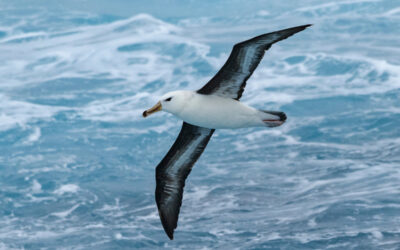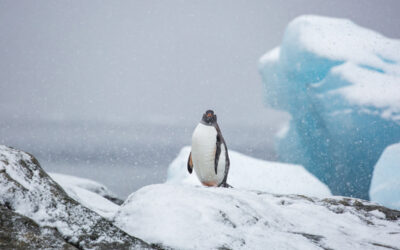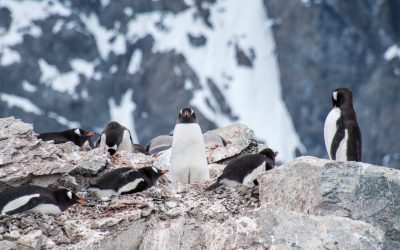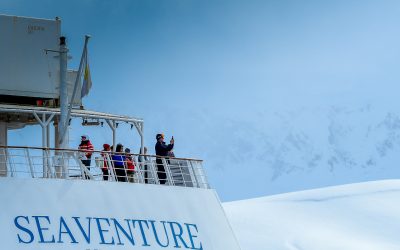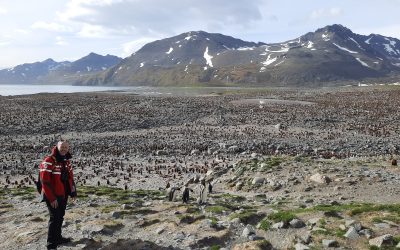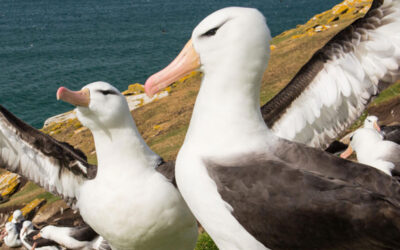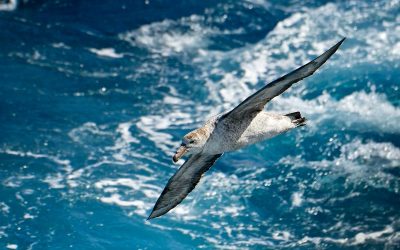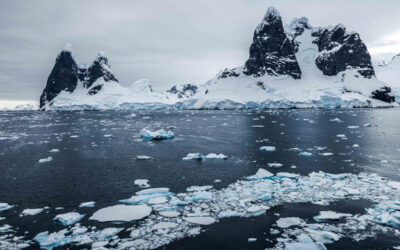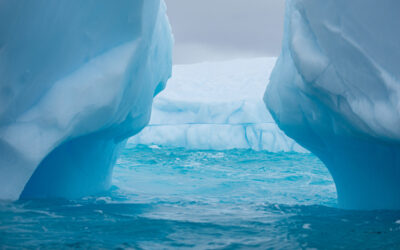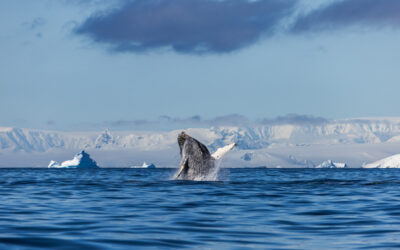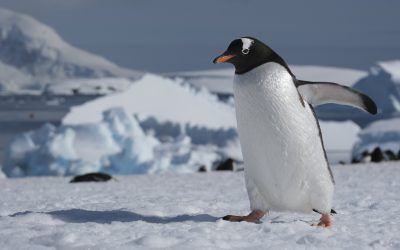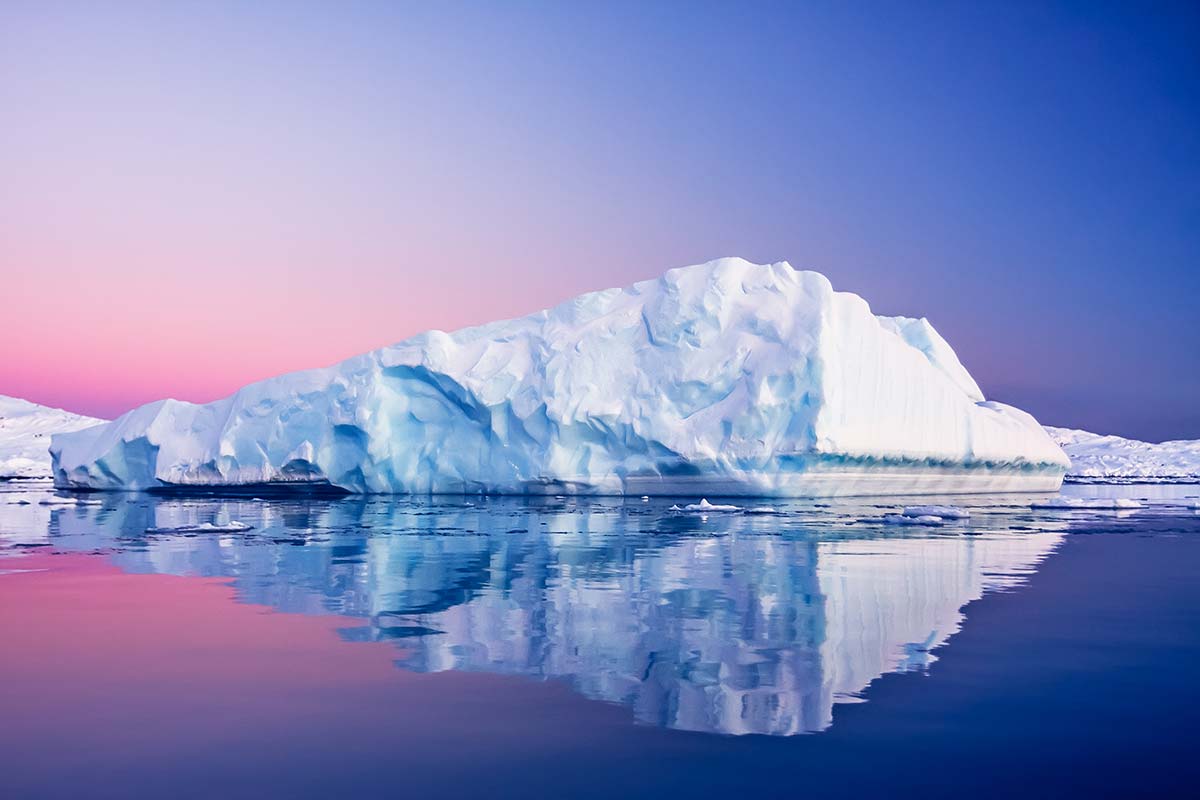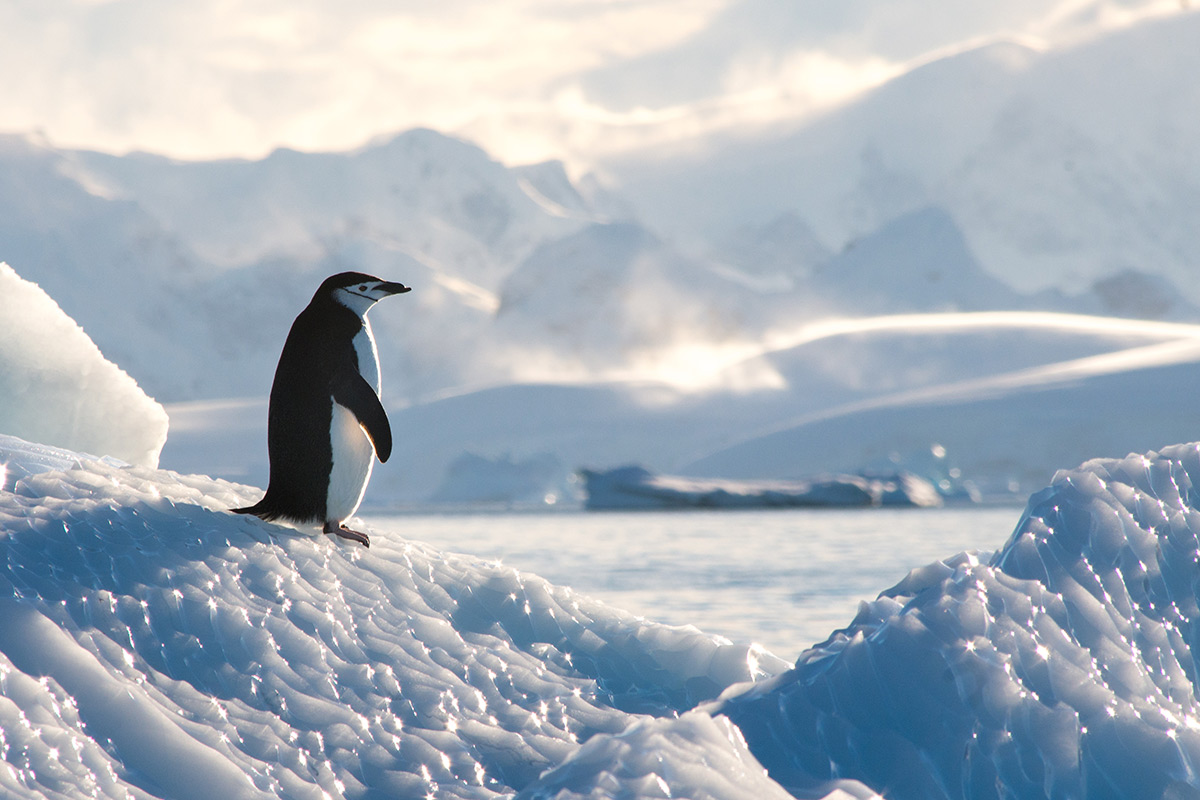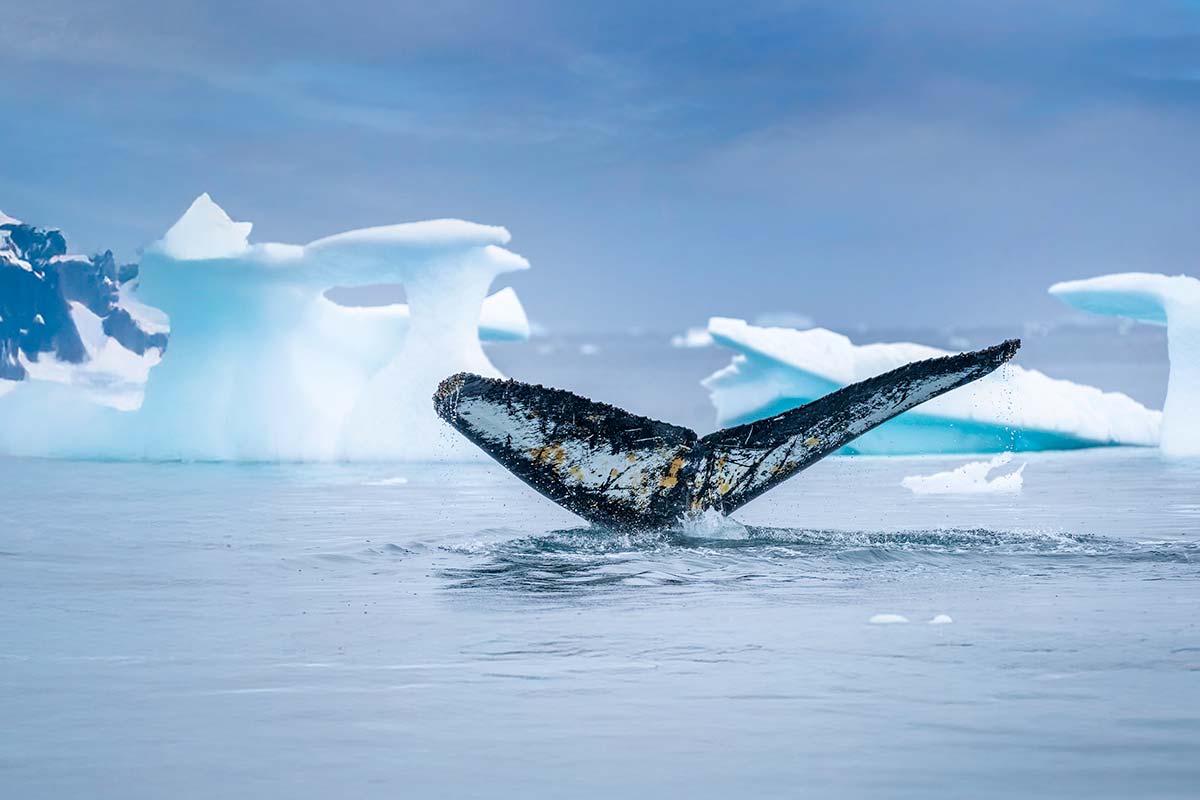Antarctic Peninsula
Penguins, Whales, Icebergs – Just for Starters!
The Antarctic Peninsula is a finger of land that stretches northwards from western Antarctica. The Peninsula is the closest point of connection between the Antarctic mainland and the rest of the world, separated by a mere 1000 kilometers of ocean known as the Drake Passage. This rugged, icy region is one of the warmest and most biologically diverse parts of Antarctica. You’ll come for the bustling penguin colonies, massive whales, and glorious icebergs, but you’ll leave remembering so much more, as this ever-changing environment offers up unexpected discoveries on a daily – and sometimes hourly – basis.
Area of the Antarctic Peninsula
- 522,000 km²
Population of the Antarctic Peninsula
- There are no permanent residents of Antarctica, and the population on the Peninsula varies seasonally. When research activities are at their peak, there are approximately 1000 to 1500 inhabitants; although in the winter months, the population drops significantly to only 200 to 300 hardy over-winterers.
Why Travel to the Antarctic Peninsula
With multiple species of penguins and whales, fantastic bird life, icebergs, glaciers and towering snow-covered mountains, Antarctica is truly another world.
Penguin Paradise!
Three species of penguin are common on the Antarctic Peninsula. The Gentoo, Adelie and Chinstrap penguins are all members of the genus Pygoscelis – the brush-tailed penguins. Adelie penguins are an ice-loving species and are mostly found in the cooler areas of the Peninsula, sush as the Antarctic Sound. Chinstrap penguins are most common on the nearby South Shetland Islands, while Gentoo penguins can be found almost everywhere, including South Georgia, the Falkland Islands and the South American mainland.
Seally Great Wildlife!
There are three main species of seal found on the Antarctic Peninsula. The most numerous by far (and the most numerous carnivore on Earth) is the crabeater seal – their name is in fact a mistranslation of the Norwegian word ‘krabbe’ meaning krill, which makes up the bulk of their diet. The Weddell seal has a catlike face and is a specialist in the coldest parts of Antarctica, where they use their teeth to keep open breathing holes in the ice. The largest of these is the leopard seal, the reptilian-looking apex predator of Antarctica; they can often be found lurking offshore penguins colonies, even though krill makes up the majority of their diet.
Frozen Geopolitics
Quisque vel suscipit ipsum. Lorem ipsum dolor sit amet, consectetur adipiscing elit. Ut sed pellentesque nulla. Cras id tincidunt lacus. Phasellus accumsan purus semper magna vehicula, id molestie magna ultrices. Curabitur a metus dictum dolor malesuada faucibus. Nullam sagittis et velit et vestibulum. Mauris ut nibh a ligula ultricies egestas. Nunc ornare nunc et iaculis posuere. Vivamus nec nibh massa. Integer a semper nunc. Etiam non enim vitae justo tincidunt sollicitudin quis id enim. Morbi hendrerit in orci et venenatis. In aliquet ornare aliquet.
Secret Missions on Ice...
The first stations were established on the Antarctic Peninsula by the top-secret wartime Operation Tabarin. This mission aimed to establish British sovereignty in the region, while at the same time repelling German and Argentine attempts to do the same. Political interest in Antarctica after the Second World War led to Britain and Argentina signing the Antarctic Treaty in 1959 along with ten other nations. Some of the Operation Tabarin bases were abandoned, some were transferred to other countries, and some, such as Base A (Port Lockroy) and Base F (Wordie House), have been maintained as museums by the UK Antarctic Heritage Trust.
Map of the Antarctic Peninsula
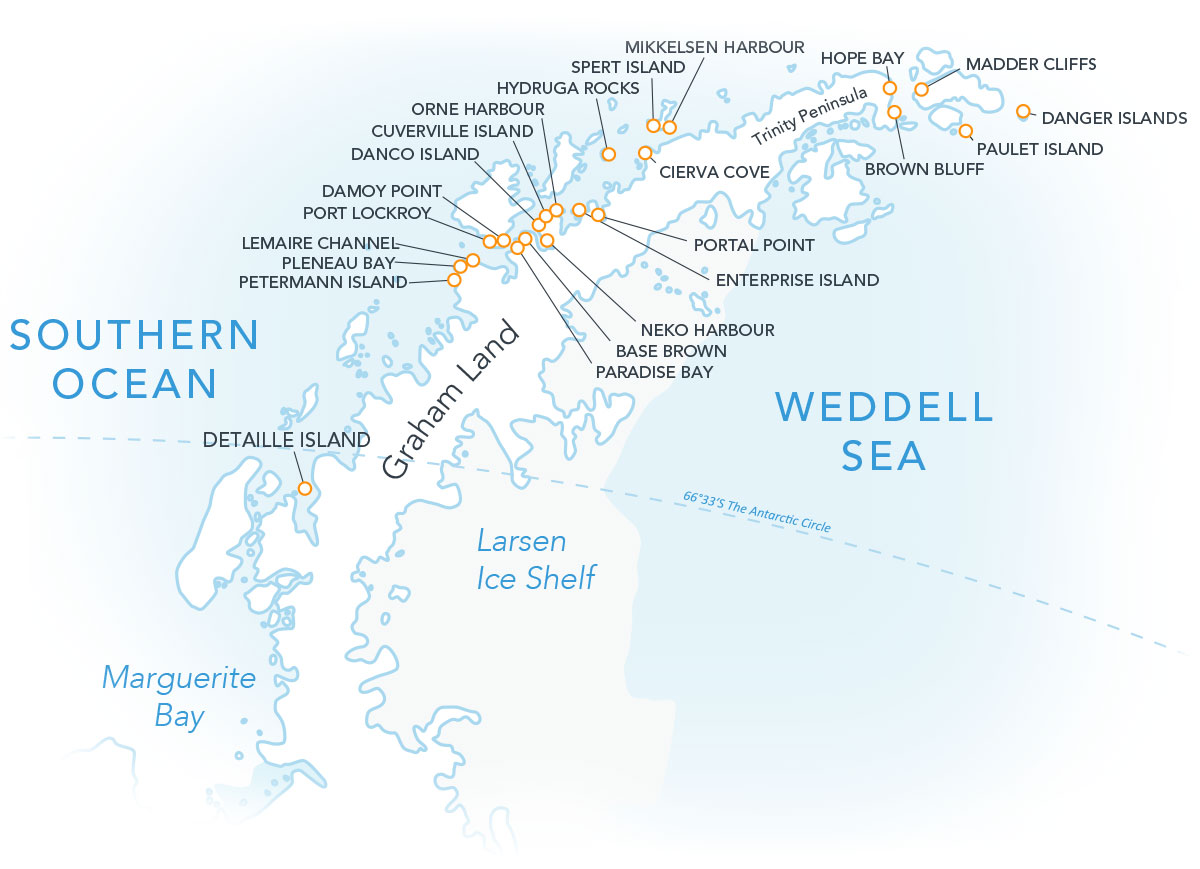
A Breathtaking and Vulnerable Landscape
The Antarctic Peninsula, the northernmost part of mainland Antarctica, offers a varied landscape featuring towering mountains, deep fjords, all-covering glaciers, and ice-covered islands. The region’s warming climate is causing glaciers to retreat rapidly, altering the coastline and creating dramatic ice formations, including massive icebergs. Rich in marine wildlife, the peninsula’s waters attract species like penguins, seals, and whales which feast on seasonal krill bounties. Despite harsh conditions, its milder climate compared to other parts of Antarctica allows for seasonal ice-free land, supporting unique and delicate ecosystems. The Peninsula’s evolving geography reflects both the beauty of nature and its vulnerability to climate change.
Nature and Wildlife of the Antarctic Peninsula
The Antarctic Peninsula might seem like a frozen wilderness at first glance, but it’s teeming with life, both on land and in the surrounding waters. From bustling penguin colonies to massive whales cruising through the icy seas, the peninsula’s wildlife has adapted to thrive in some of the harshest conditions on Earth. Whether you’re drawn to the sight of seals lounging on ice floes or watching a giant albatross glide over the ocean, the Antarctic Peninsula offers a rare glimpse into a world where nature remains untouched and wild.
With over 22 different species worldwide, and considered one of the largest living flying seabirds by its wingspan (which can be larger the size of...
Antarctica’s penguins are one of the top reasons why people desire to travel to Antarctica. On the White Continent, you will certainly see hundreds...
Oceanites, a non-profit scientific and educational foundation, is dedicated to the conservation of our world's oceans, islands, and wildlife. Their...
Zodiac cruising deep in AntarcticaAntarctica, a vast and pristine wilderness, has always captivated the adventurous spirits of travelers worldwide....
Written by Paul Clammer Celebrating Antarctica 13 DAYS (10 nights on board) / Departures in Nov, Dec, Jan, and Feb A true celebration of everything...
A fantastic spot for viewing the ‘iceberg graveyard’, Port Charcot is a bay we visit on the north-western arm of Booth Island on the Antarctic...
What does the word 'albatross' mean to you? If you golf, you may be familiar with the term as it means you are three under par on a hole. The word...
There is no mightier bird than the Wandering Albatross, a bird surrounded by lore and impressive in their size and wingspan. Also known as the snowy...
The Lemaire Channel is a wonderfully calm and stunning waterway that, if we are fortunate enough to pass through it, offers some of the most...
Cierva Cove is a stunning cove that lays 6 nautical miles southeast of Cape Sterneck in Hughes Bay, along the west coast of Graham Land, Antarctica....
An encounter with a Humpback Whale is always a top experience for our guests, with these impressively huge animals curiously approaching our ships...
Historical Significance Cuverville Island is an island located at the entrance of Errera Channel along the Antarctica Peninsula. Discovered by the...
Climate of the Antarctic Peninsula
The climate of the Antarctic Peninsula is milder compared to the rest of Antarctica, largely due to its northern location extending beyond the Antarctic Circle. Summers bring temperatures just above freezing, allowing for seasonal ice melt and creating ice-free zones along the coast. Despite its relatively mild conditions, the peninsula still experiences harsh, cold winds and dramatic weather changes, making it a place of stark contrasts.
| AVERAGE HIGH | AVERAGE LOW | SEA ICE COVER | SUNLIGHT HOURS | |
|---|---|---|---|---|
| January | 34°F (1°C) | 28°F (-2°C) | Minimal | 20–24 hours (Daylight) |
| February | 32°F (0°C) | 27°F (-3°C) | Minimal | 18–22 hours |
| March | 28°F (-2°C) | 21°F (-6°C) | Increasing | 12–18 hours |
| April | 23°F (-5°C) | 14°F (-10°C) | Significant | 6–12 hours |
| May | 17°F (-8°C) | 9°F (-13°C) | Extensive | 0–6 hours (Twilight) |
| June | 14°F (-10°C) | 5°F (-15°C) | Maximum | 0 hours (Polar Night) |
| July | 12°F (-11°C) | 3°F (-16°C) | Maximum | 0 hours |
| August | 14°F (-10°C) | 5°F (-15°C) | Maximum | 0–6 hours (Twilight) |
| September | 19°F (-7°C) | 10°F (-12°C) | Extensive | 6–12 hours |
| October | 25°F (-4°C) | 18°F (-8°C) | Decreasing | 12–18 hours |
| November | 30°F (-1°C) | 25°F (-4°C) | Minimal | 18–22 hours |
| December | 34°F (1°C) | 28°F (-2°C) | Minimal | 20–24 hours (Daylight) |
Popular Expeditions to the Antarctic Peninsula
Join us on any of our expeditions to the Antarctic Peninsula, and you’ll experience the incredibly diverse wildlife, stunning mountain scenery, and magnificent icebergs that make this part of the world unlike any other.

